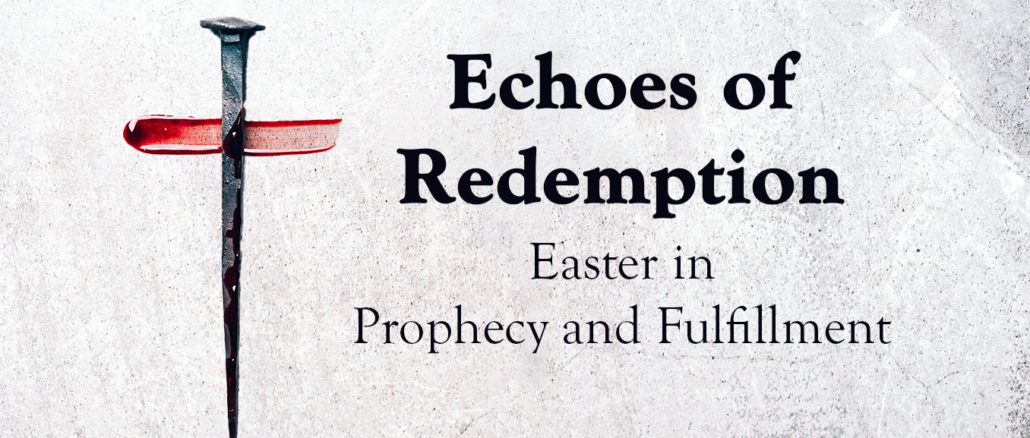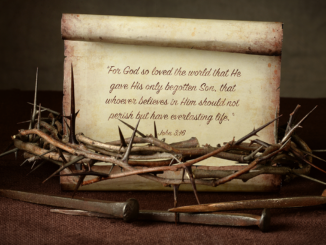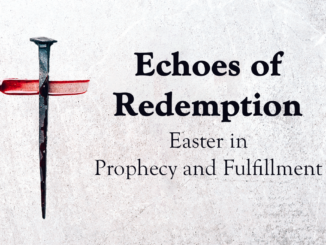
Read Isaiah 52:13 – 53:12
In the heart of the Easter story lies a profound paradox—a tale of suffering and redemption, of pain and triumph. Isaiah 53:5 encapsulates this paradox, offering a glimpse into the divine plan of salvation centuries before its fulfillment in the person of Jesus Christ.
Isaiah, often referred to as the prophet of the Messiah, paints a vivid portrait of the suffering servant—the one who would bear the weight of humanity’s sin and bring about reconciliation between God and mankind. In verse 5, we read these powerful words: ” But He was wounded for our transgressions, He was bruised for our iniquities; the chastisement for our peace was upon Him, and by His stripes we are healed.” (Isaiah 53:5)
Isaiah, often referred to as the prophet of the Messiah, paints a vivid portrait of the suffering servant—the one who would bear the weight of humanity's sin and bring about reconciliation between God and mankind. Click To TweetThis prophetic passage unveils the sacrificial nature of the Messiah’s mission. It speaks of piercing, crushing, punishment, and wounds—images that foreshadow the suffering Jesus would endure on behalf of humanity.
Reflect on the scene at Golgotha, where Jesus, the innocent Lamb of God, was pierced for our transgressions. The nails driven into His hands and feet were not merely physical wounds but symbols of the depth of His love for us. Through His sacrificial death, Jesus offers forgiveness and redemption to all who believe in Him.
Consider the weight of our iniquities that Jesus carried upon His shoulders as He hung upon the cross. Every sin, past, present, and future, was laid upon Him. In His suffering, He took upon Himself the punishment that we rightfully deserved, demonstrating the unfathomable extent of God’s mercy and grace.
Contemplate the paradoxical nature of Jesus’ suffering – the punishment that brought us peace. Through His death and resurrection, Jesus reconciled us to God, offering us peace with Him. In Christ, we find forgiveness, restoration, and the assurance of eternal life. His sacrifice opens the door to a relationship with God, bringing us true and lasting peace.
Yet, in the midst of His suffering, Jesus brought about a profound transformation. Through His sacrificial death on the cross, He accomplished what no other could—He brought peace between God and humanity. By His wounds, we are healed—spiritually, emotionally, and eternally.
As we journey through the Easter season, let us meditate on the prophecy of the suffering servant found in Isaiah 53:5 and its fulfillment in Jesus Christ. May we never cease to marvel at the depth of His love and the magnitude of His sacrifice. Through His death and resurrection, we find forgiveness, peace, and healing. May we respond with gratitude and devotion, surrendering our lives to the one who gave His all for us.
May we never cease to marvel at the depth of His love and the magnitude of His sacrifice.
Reflective Questions:
- How does Isaiah’s prophecy of the suffering servant deepen your understanding of Jesus’ sacrifice on the cross? Reflect on the significance of Jesus being pierced, crushed, and wounded for our sake. How does His suffering impact your relationship with Him?
- Isaiah speaks of healing through the wounds of the suffering servant. In what ways have you experienced healing through Jesus Christ?
- As you meditate on the Easter story, take a moment to thank God for the incomparable gift of salvation through Jesus Christ. How does His sacrificial love inspire you to live for Him?



